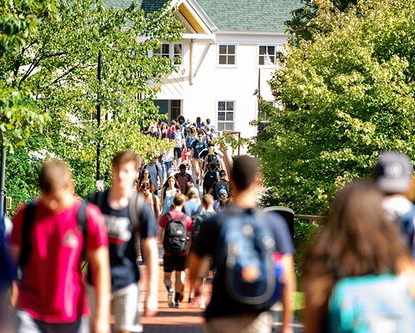
Historically, higher education has been seen as a path to break cycles of poverty, an opportunity for social mobility and a way to support our increasingly technical economy. However, with rising tuition costs, burdens of student debt and a long list of inequities in higher education access, concerns can be raised about the true and sincere importance of a college degree.
Hamilton College reports that 27% of its student body consists of U.S. students of color and 50% of the student body is reliant on financial aid. Hamilton also reports that its yearly cost for tuition and room/boarding sums up to be a grand $85,790. The U.S. Census Bureau disclosed that the average median household income in the U.S. was $80,610, suggesting that over half of U.S. households would find it incredibly challenging to afford even half of Hamilton’s tuition without any financial assistance. I argue that the privatization and exclusiveness of higher education exacerbates economic inequalities by privileging students that already have access to adequate resources, mentorships and professional development networks. Rather than leveling the playing field and creating more opportunities for students in need, higher education can further entrench economic inequality by allowing graduates from affluent families to take advantage of a system that already favors them. By speaking with students from different backgrounds and upbringings, it is visible to me that affluent families tend to have better knowledge on navigating higher education systems and understanding how to benefit most from a college experience. This puts first generation students at a disadvantage considering their lack of experience in such an elitist and exclusive admissions process. Furthermore, The Wall Street Journal reported that a surprising 60% of operational revenues came from tuition, suggesting that the school relies heavily on a large percentage of its student body to pay full tuition to operate ideally. Those who can afford elite institutions such as Hamilton often gain a significant advantage in the admissions process while those who can not are forced into less selective or more publicly funded institutions.

Even once students gain admissions to these elite institutions, the struggles and disparities do not end there. I can speak from my own experience seeing that many students on financial aid at Hamilton feel pressure to prioritize degrees and experiences that promise future high earnings rather than pursuing their true interests. This focus on financial trade-off rather than sincere intellectual and personal growth severely subverts the holistic value of a liberal arts education. Even more so, it can be incredibly difficult for a student that is not accustomed to such a racially, financially and culturally monolithic setting to assimilate and feel comfortable. Essentially, the barriers to higher education extend beyond admission into the college experience itself.
For higher education to serve as a true equalizer, it would require a system that emphasizes affordability, accessibility and equity in resource distribution, whether that be financially or academic/social support. Hamilton College, arguably, has done a satisfactory job in trying to level the admissions playing field. An interview with the former Vice President for Enrollment, Monica Inzer, showed that legacy admits compose a mere three to four percent of a given Hamilton class while first generation students and Pell grant recipients constitute four times that per class year. Hamilton also hosts a number of opportunity programs, like those of HEOP, POSSE and Questbridge to diversify and vary the student body’s culture while simultaneously offering a supportive structure for these students to succeed. Yet, as with any institution aspiring to be a true equalizer in our increasingly polarizing society, there is a need for stronger and more dedicated efforts towards ensuring that all students, regardless of backgrounds, have an equal chance in the admissions process and in the collegiate setting.
















